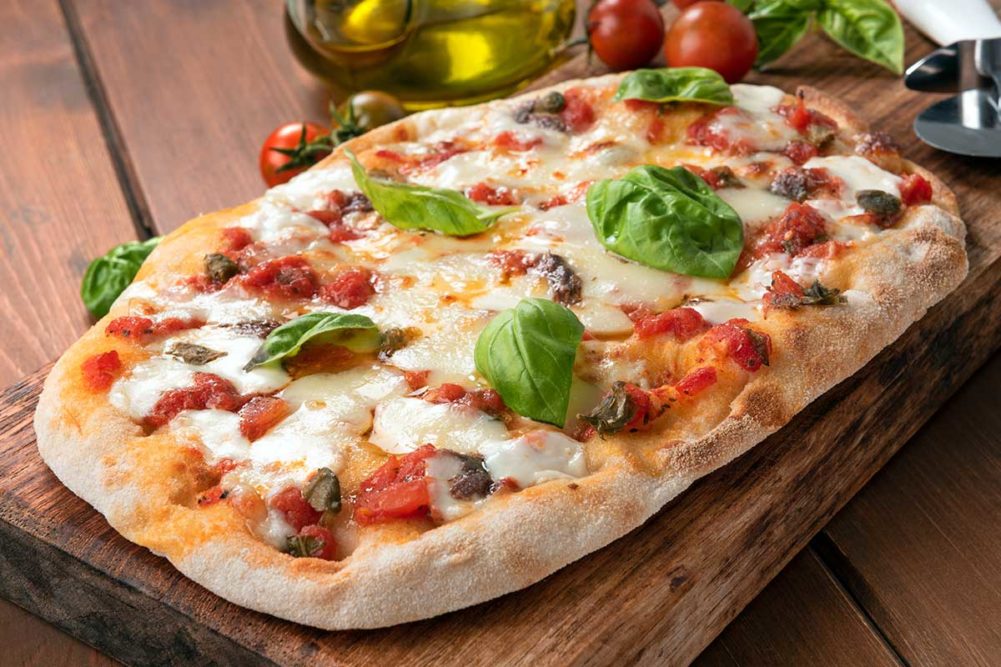Pizzas today feature distinctive crusts and fillings and can be made as quickly as ever, but many consumers are also going back to basics with traditional, artisan-style pizzas.
“There’s more demand for long-fermented doughs for artisanal pizza with high-quality toppings and non-uniform shape,” observed Randy Kelly, Fritsch USA, a Multivac company.
More manufacturers are also producing Neapolitan-style pizza that is raw dough topped with sauce, baked, then topped with other toppings, said Tom Trost, sales manager, Quantum Technical services.
This growing artisan demand has led some pizzamakers to return to a traditional high-temperature bake, which can range from 800℉ to 1,000℉. This is how pizzas were traditionally baked before lower-temperature, indirect-fire ovens became commonplace, said Ken Hagedorn, vice president, bakery sector, Handtmann.
“You get that black blistering on the crust, and we’re seeing a lot more people headed that direction, because those are considered the upper echelon of pizza crusts,” he said. “It’s basically going backwards to go forward.”
GEA, for example, offers a direct-fired gas oven with a stone conveyor for a traditional pizza bake.
Franco Fusari, commercial director and co-owner of Minipan, noted the rapid rise of pinsa, a Roman-style flatbread pizza with this artisan appeal. Pinsa is made with extra-long fermentation, as well as rice starch, soy and high protein flour that yield a highly hydrated dough with a simplified gluten network that’s easier to digest.
“Pinsa is booming in Europe and slowly but surely spreading around,” Mr. Fusari noted. “If you do it the right way, it’s a totally clean label product with zero chemicals and enzymes. It has a super crispy outside and a soft inside. This is where the market is going.”
Minipan’s r_Evolution line is made for these highly hydrated, artisan formulations. Fully automated, the line can process 6,500 lbs of dough per hour and loads the dough directly into the oven without extruding or proofing.
While some artisan pizzamakers may be skeptical that automation can be implemented without diminishing that artisan touch, Mr. Fusari said the r_Evolution line is an example of the industry making this possible.
“We’re trying to perfect the technology to achieve the artisan result but on an industrial level with super-high automation,” he said. “We try to develop a machine for the product that makes it the best and not lose its spirit.”
Bakers going from a handcrafted to automated process must work closely with suppliers to ensure their product maintains quality, added Hans Besems, executive product manager, AMF Tromp, an AMF Bakery Systems brand.
“They have become successful with their product, they have grown with that product so that they could start investing in more automation, so we need to help guide them in the right direction so they don’t need to change anything,” he said.
This article is an excerpt from the November 2022 issue of Baking & Snack. To read the entire feature on Pizza Processing, click here.





